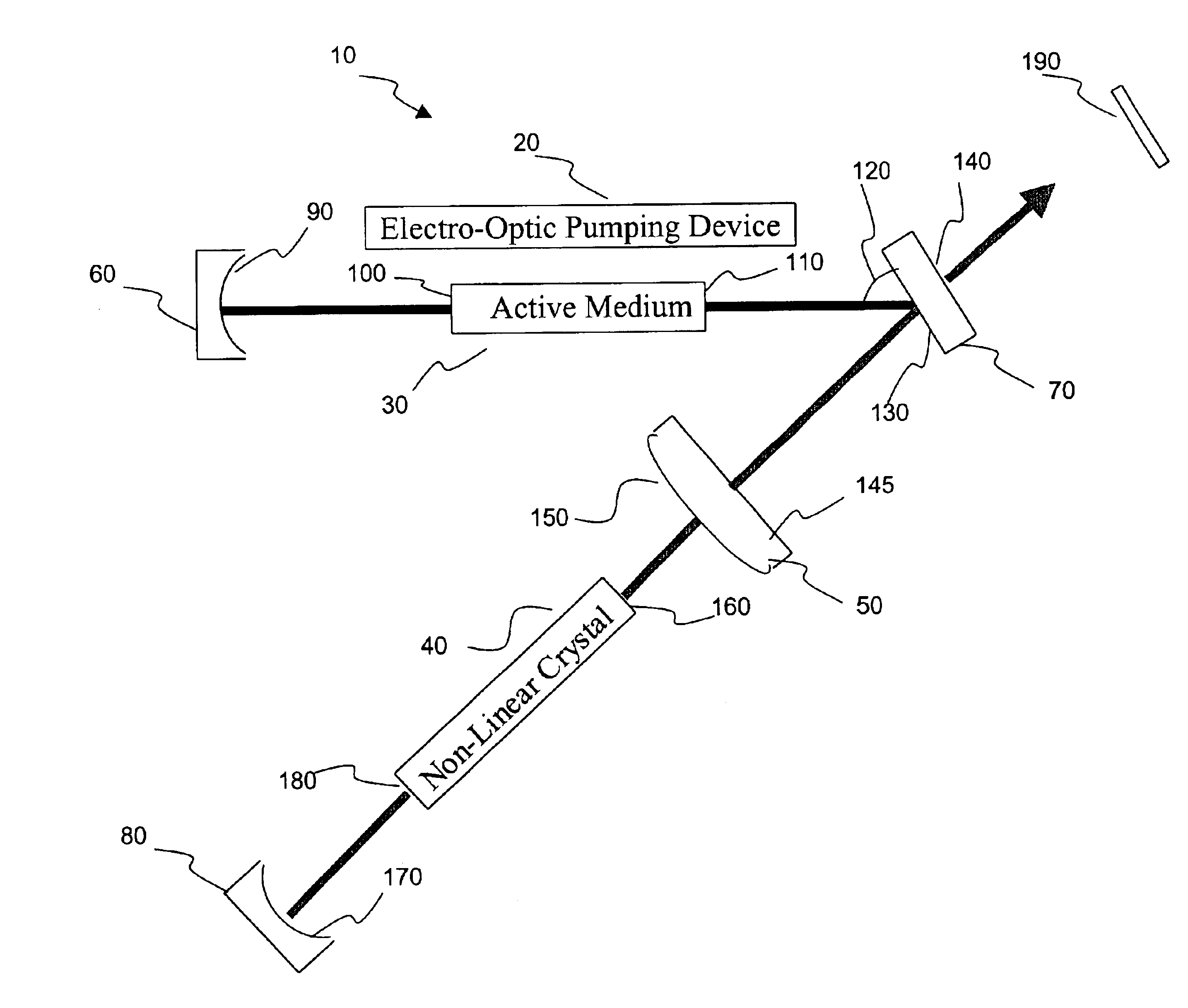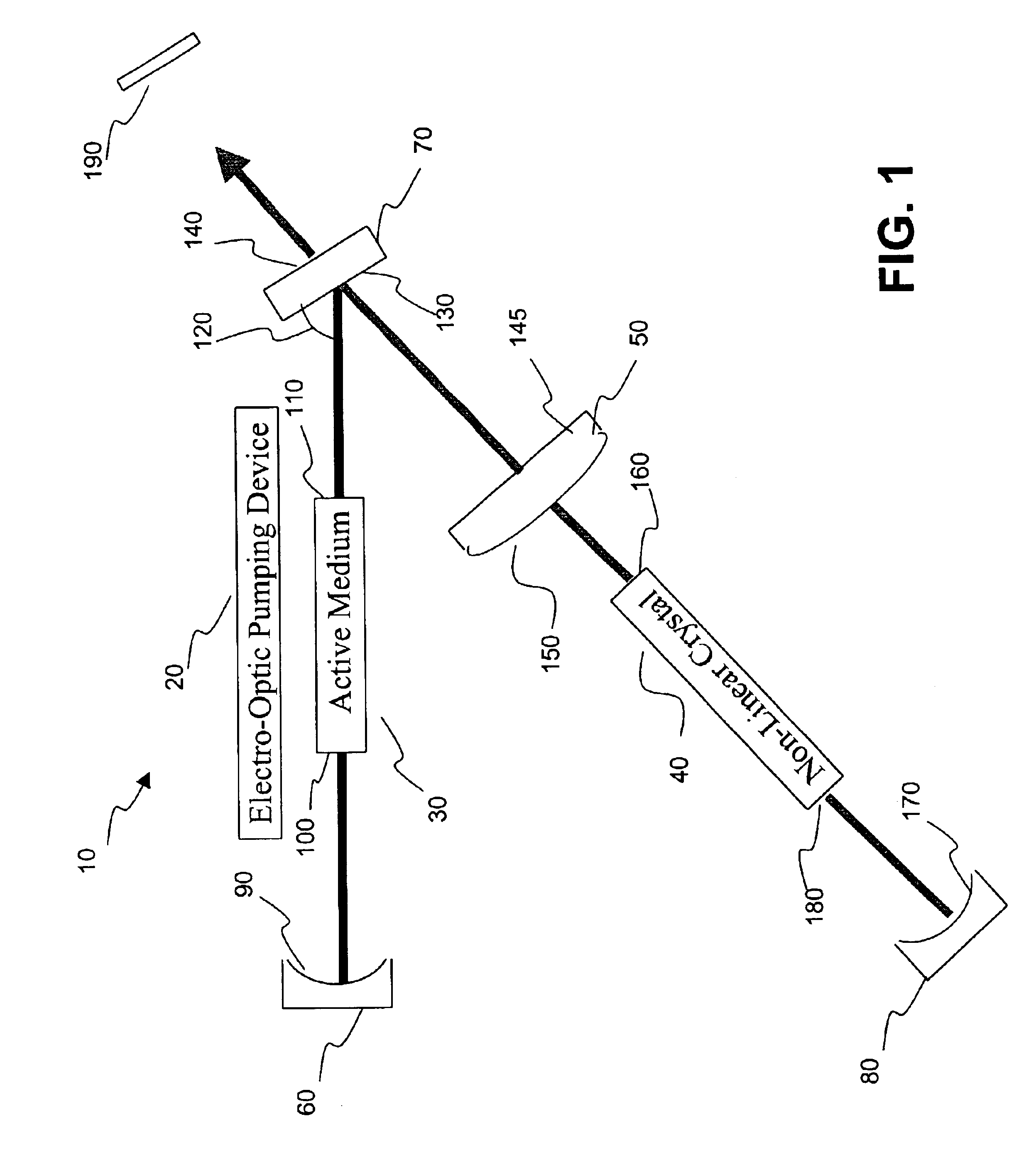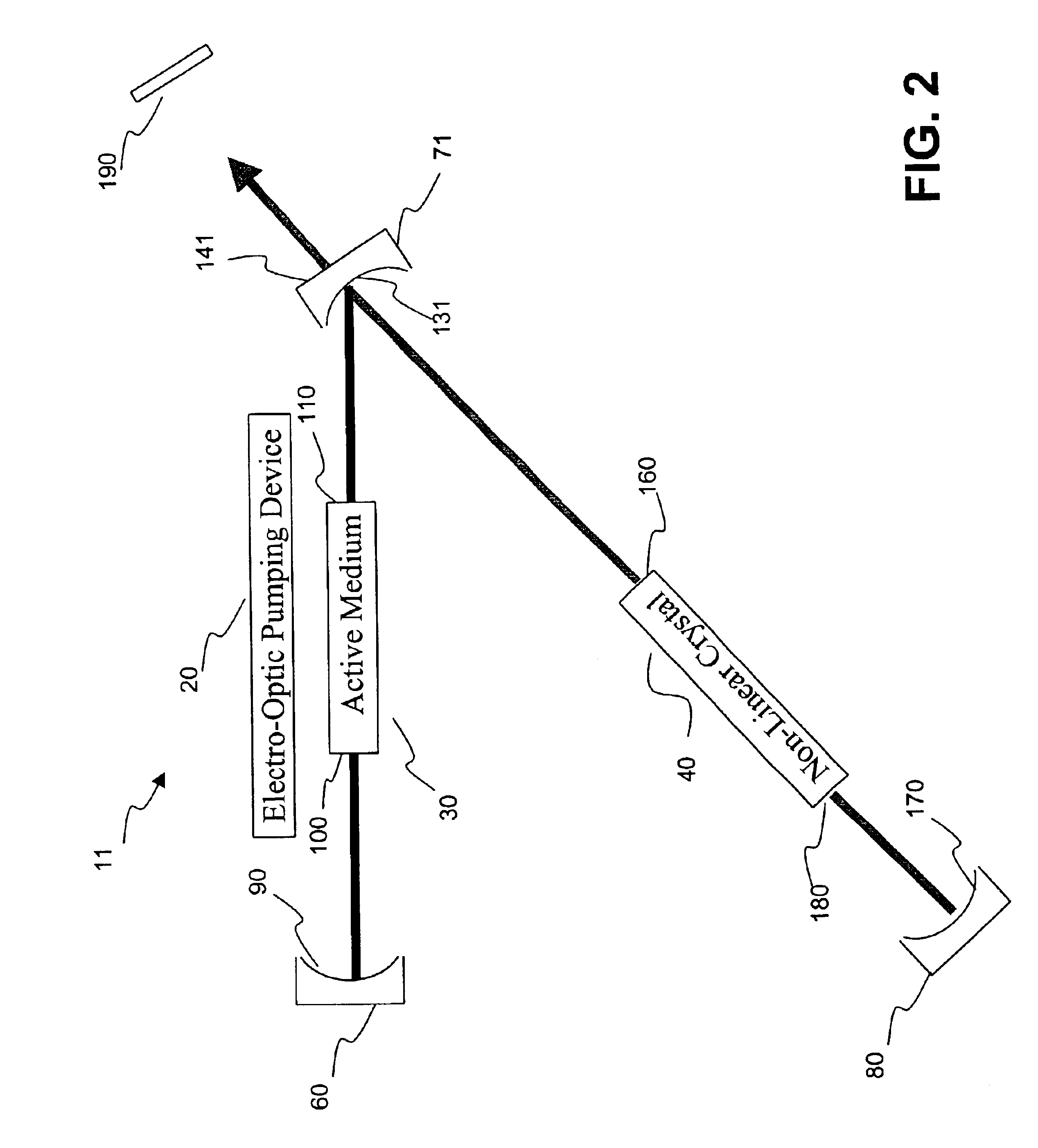Green welding laser
a green welding laser and generator technology, applied in the direction of optical resonator shape and construction, instruments, manufacturing tools, etc., can solve the problems of inefficiency, insufficient yag lasers that are often used for low power (500 w (watts)), and insufficient yag lasers that are often used for welding applications. , to achieve the effect of reducing the number of yag lasers, and reducing the number of y
- Summary
- Abstract
- Description
- Claims
- Application Information
AI Technical Summary
Problems solved by technology
Method used
Image
Examples
Embodiment Construction
[0011]An exemplary embodiment of the present invention provides a method and apparatus for generating an Nth harmonic frequency beam (N≧2). In accordance with an exemplary embodiment, the harmonic, optical generator may comprise an electro-optic pumping device (e.g., laser diode, flash lamp, etc.) that produces an output pumping radiation which is optically coupled into an active medium disposed within an optical resonator to pump the active medium and to excite the optical resonator at a fundamental wavelength. In the described exemplary embodiment a non-linear electro-optic medium may be coupled to the excited, fundamental optical mode of the optical resonator to produce a non-linear interaction with the fundamental wavelength producing harmonic wavelength photons. The advantages of the present invention may be best understood in the context of an exemplary application, such as, for example, a laser welding system.
[0012]FIG. 1 is a simplified schematic diagram of an exemplary opti...
PUM
| Property | Measurement | Unit |
|---|---|---|
| peak power | aaaaa | aaaaa |
| focal length | aaaaa | aaaaa |
| focal length | aaaaa | aaaaa |
Abstract
Description
Claims
Application Information
 Login to View More
Login to View More - R&D
- Intellectual Property
- Life Sciences
- Materials
- Tech Scout
- Unparalleled Data Quality
- Higher Quality Content
- 60% Fewer Hallucinations
Browse by: Latest US Patents, China's latest patents, Technical Efficacy Thesaurus, Application Domain, Technology Topic, Popular Technical Reports.
© 2025 PatSnap. All rights reserved.Legal|Privacy policy|Modern Slavery Act Transparency Statement|Sitemap|About US| Contact US: help@patsnap.com



